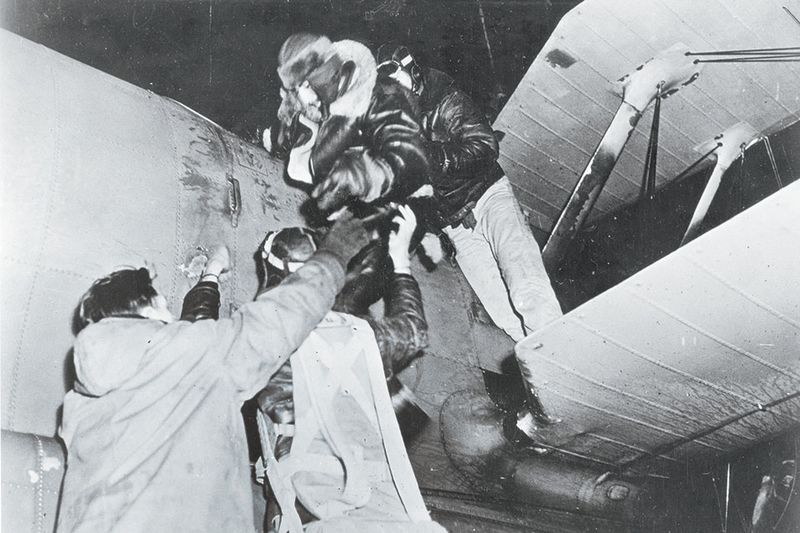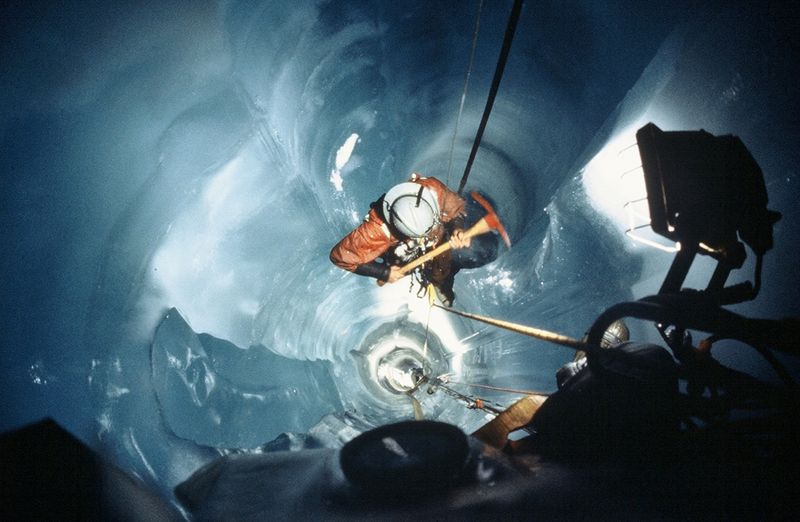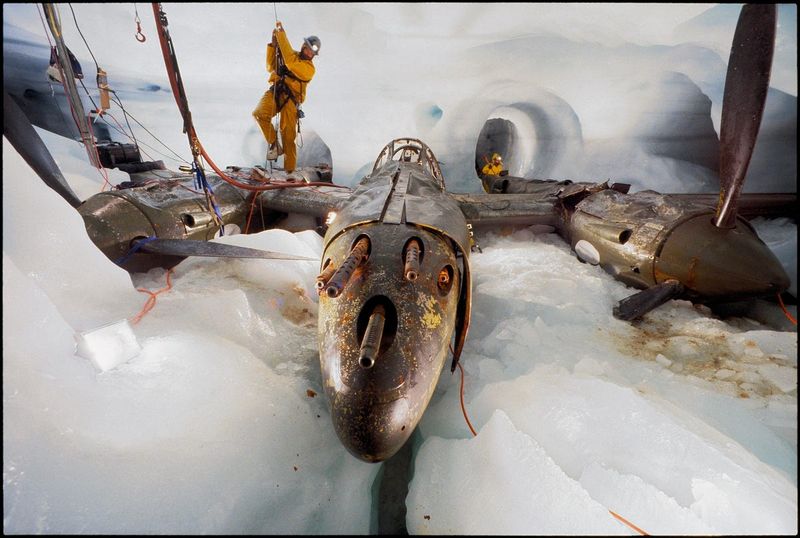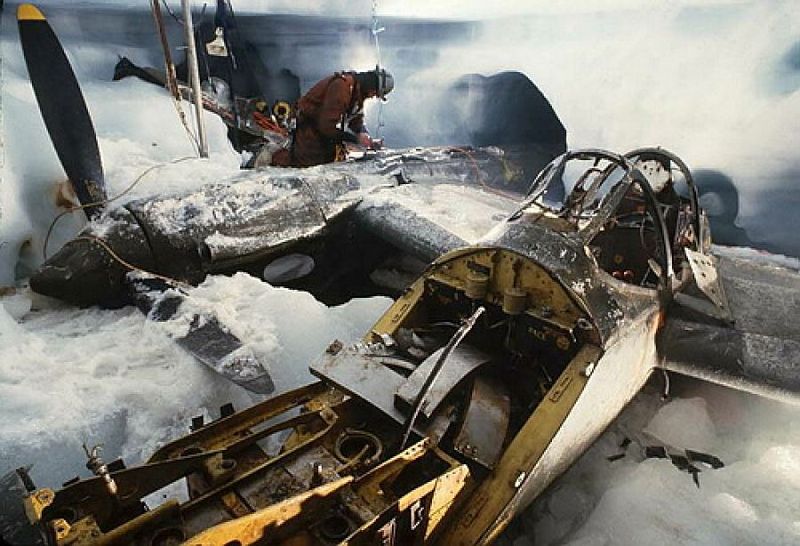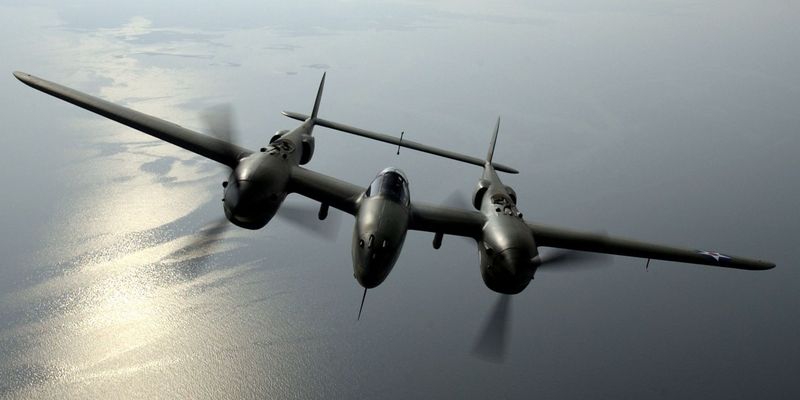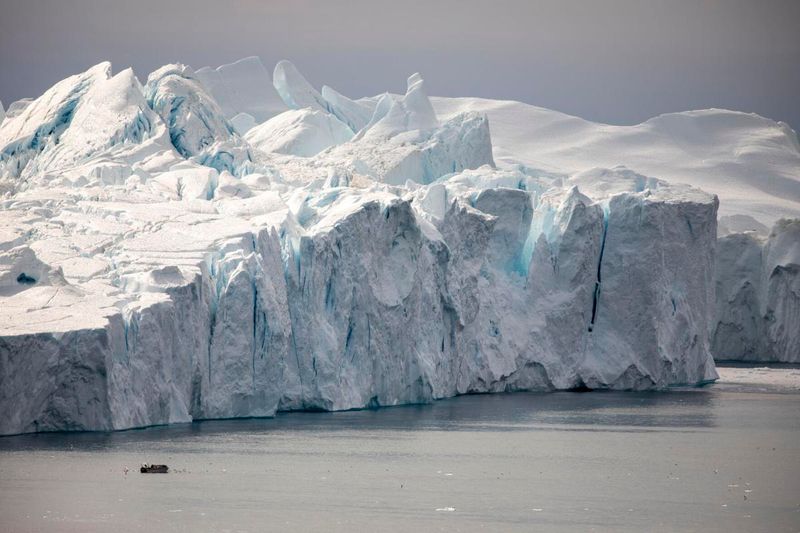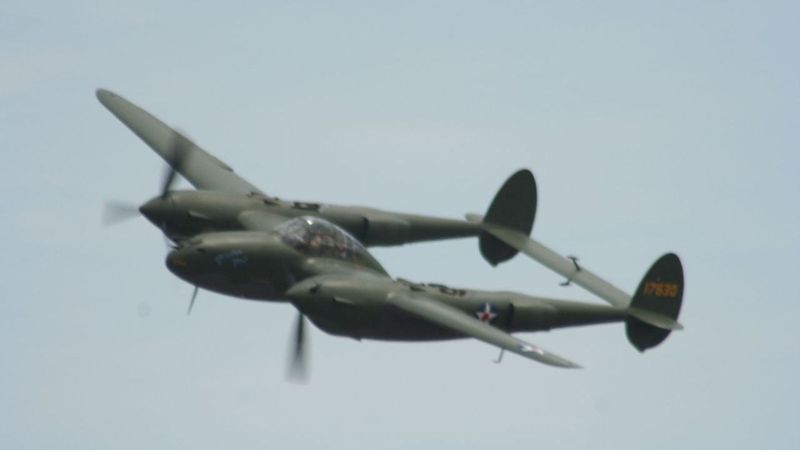In the icy depths of Greenland, an incredible story of aviation history was frozen in time. During World War II, several American warplanes made emergency landings on a Greenland glacier, only to be swallowed by decades of snow and ice. The remarkable discovery and recovery of one P-38 fighter, nicknamed ‘Glacier Girl,’ captures our imagination with its tale of survival, perseverance, and restoration.
1. The Mission That Started It All
In the summer of 1942, Operation Bolero aimed to strengthen Allied forces in England. Six P-38 Lightning fighters and two B-17 bombers took off from America, headed across the North Atlantic.
Thick clouds and unexpected storms forced the pilots to fly dangerously low, burning precious fuel. With no chance of reaching their destination and fuel gauges nearing empty, the squadron made a difficult decision.
The pilots performed emergency belly landings on Greenland’s vast ice sheet, forever changing these aircraft’s destinies and creating an aviation mystery that would remain unsolved for nearly half a century.
2. All Crew Members Survived
Against overwhelming odds, every single airman walked away from the crash landings. Huddled in makeshift shelters carved from aircraft parts, they endured biting winds and sub-zero temperatures while awaiting rescue.
Radio operator Lloyd Puryear managed to establish contact with a weather station 40 miles away. The U.S. Coast Guard cutter Northland launched a daring rescue mission across treacherous ice fields.
After nine grueling days on the glacier, all 25 men were safely evacuated—a remarkable feat considering the remote location and harsh Arctic conditions. Their survival story remains one of WWII’s most impressive rescue operations.
3. Buried Under 268 Feet of Ice
Mother Nature quickly reclaimed the abandoned aircraft. Greenland’s ice cap accumulates roughly seven feet of new snow annually, which gradually compresses into solid ice. Each passing year buried the planes deeper beneath the frozen surface.
The glacier itself wasn’t stationary. It flowed like an extremely slow river, carrying the aircraft several miles from their original landing spots. This movement crushed some planes while preserving others in ice chambers.
By the time recovery efforts began decades later, radar surveys revealed the astonishing depth—268 feet of solid ice separated Glacier Girl from daylight, equivalent to the height of a 25-story building!
4. Rediscovered in 1988
Aviation enthusiast Pat Epps and businessman Richard Taylor became obsessed with finding the lost squadron. Their expedition, nicknamed “Greenland Expedition Society,” made multiple attempts throughout the 1980s, facing blizzards, equipment failures, and skepticism from experts.
Using ground-penetrating radar technology borrowed from oil exploration, they finally detected large metal objects deep within the ice in 1988. The signature of one P-38 appeared remarkably intact on their screens.
The team celebrated their discovery by planting an American flag at the spot. Little did they know their hardest challenge—actually retrieving the aircraft—was just beginning.
5. A Decade-Long Recovery Effort
Extracting Glacier Girl required pioneering a new recovery technique. Engineers designed a custom-built hot water drill called “Super Gopher” that could melt a 4-foot wide shaft through the ice.
Workers descended into the narrow ice tunnel, spending months carving out a cave around the aircraft. They disassembled the P-38 piece by piece, sending each component to the surface through the narrow shaft.
The $638,000 recovery operation faced numerous setbacks—cave-ins, equipment failures, and funding shortages. What began as a summer project in 1989 wasn’t completed until 1992, demonstrating extraordinary human determination against Arctic elements.
6. Perfectly Preserved in Ice
The freezing temperatures created an ideal preservation environment. When workers first reached the P-38, they found its olive drab paint still vibrant and the “Kentucky” nose art clearly visible.
Inside the cockpit, the control panel gauges remained intact, and personal items left behind told silent stories. A navigator’s pencil still worked after 50 years, and a newspaper found in the wreckage could still be read.
Even the .50-caliber machine guns were in salvageable condition. The aircraft’s aluminum structure showed minimal corrosion, though the tremendous pressure had crushed some sections and broken the twin booms.
7. Restored to Flying Condition
Millionaire collector Roy Shoffner purchased the recovered P-38 parts and assembled a team of restoration experts in Middlesboro, Kentucky. They faced a monumental challenge—approximately 80% of the original aircraft needed repair or replacement.
Craftsmen fabricated new components using original Lockheed blueprints. The team tracked down surviving P-38 mechanics from WWII to consult on forgotten assembly techniques and sourced rare Allison V-1710 engines.
After 10 years and over $6 million invested, Glacier Girl roared back to life on October 26, 2002. The distinctive twin-boom fighter once again graced the skies, becoming one of only six airworthy P-38s in existence.
8. The Other Lost Warbirds Remain
While Glacier Girl captured worldwide attention, her squadron mates still lie entombed in the ice. Five additional P-38 Lightnings and two massive B-17 Flying Fortress bombers remain somewhere within the glacier’s grip.
Modern expeditions have attempted to locate these other aircraft using advanced technology. The glacier’s movement has scattered the planes across miles of territory, complicating search efforts.
Some aviation enthusiasts dream of recovering another P-38 from the squadron. Others believe the B-17s represent an even greater historical prize, as fewer complete examples of these iconic bombers exist today than their Lightning counterparts.
9. A Race Against Time
Climate change has dramatically altered Greenland’s ice cap since Glacier Girl’s recovery. The region now loses billions of tons of ice annually, transforming the preservation environment of the remaining aircraft.
Rising temperatures could expose hidden warbirds as the glacier retreats. In 2018, a WWII P-38 briefly emerged from melting ice near Ikateq before disappearing again during winter snows.
Paradoxically, the same warming that might reveal these treasures also threatens their condition. Once exposed to air and water, the preserved metals would rapidly deteriorate, potentially destroying these time capsules before they can be properly documented or recovered.
10. A Living Piece of History
Glacier Girl’s appearances at airshows draw thousands of spectators mesmerized by her unique story. The distinctive rumble of her twin Allison engines connects modern audiences with the Greatest Generation in a way static museum displays cannot.
The aircraft has been valued at over $10 million, making it one of the most valuable warbirds in existence. Beyond monetary worth, it represents an engineering marvel both in its original design and its incredible restoration.
Housed at the Military Aviation Museum in Virginia Beach when not flying, Glacier Girl serves as a powerful ambassador of aviation history. Her journey from factory to glacier to sky embodies the resilience and ingenuity that defined the World War II era.


